If you have trouble journaling frequently, it’s probably because you haven’t found your journaling style yet.
Here’s the thing, journaling isn’t a one-size-fits-all type of thing. So you may be using a style that conflicts with your personality.
The good news is that there are many different journaling styles out there, and you’re bound to find one or a combination that works for you.
In this article, we’ll explore five simple steps to help you find a journaling style that fits you like a glove.
How Do I Find My Journaling Style?
Step 1. Find Your Reason for Journaling

What’s your purpose for journaling?
Before you start journaling, it’s important to take a step back and define your purpose.
- Are you looking to track your daily thoughts and feelings?
- Work through problems or challenges you’re facing
- Brainstorm new ideas or simply get your creative juices flowing
Knowing your purpose for journaling will help you understand what type of journaling may work best for you.
However, it’s not the only factor to consider when trying to find your unique style.
This brings us to our next step.
Step 2. Consider Your Personality

What type of person are you?
Are you more of a visual person or someone who likes to write things down?
Do you prefer to keep things short and sweet, or do you like to take your time and really delve deep into your thoughts and feelings?
Do you like to keep things neat, or are you okay with getting messy?
Your answers to questions like these give you insight into your personality, and with journaling, your personality plays the biggest role.
For example:
Trish likes to doodle all day long; no matter if she’s in an important meeting at work or watching a boring movie, she always has a paper to draw on. Trish read about the benefits of journaling and wanted to reap those benefits, but she’s been having a hard time sitting and writing about her thoughts for more than two minutes.
After answering the questions above, Trish understands that she’s a very visual person who likes to keep things short and sweet. She also realizes that she doesn’t want to get too messy.
With this in mind, she started incorporating doodles with a brief description of what she was feeling or thinking in her journal, and she’s been journaling regularly ever since.
Trish paid attention to the type of person she was and used that to her advantage. By doing that, journaling became something she looked forward to instead of dreading.
Now, it’s your turn. Answer the questions above to get a better understanding of the type of person you are.
Once you’ve figured out your purpose and personality, it’s time to get your hands dirty with the next step.
Step 3. Try Different Journaling Styles

How will you know what you like if you don’t explore various options?
The truth is, there are a lot of different styles of journaling, and most of them come with prompts to help steer you in the right direction.
A few examples of them are:
- Art Journaling (using drawings and/or paintings to express thoughts)
- Bullet Journaling (a mix of to-do lists, diary entries, and trackers)
- Travel Journaling (a visual account of your adventures)
- Gratitude Journaling (a practice of listing things you’re grateful for)
- Food Journaling (tracking what you eat and how it makes you feel)
- Dream journaling (recording and interpreting your dreams)
- Mental Health journaling (monitoring your mental state and well-being)
- Morning pages (writing your stream-of-consciousness / your thoughts every morning)
- Free Writing (writing without prompts or structure)
The list goes on and on, but these are only some of the most popular styles. The point is that there are endless possibilities when it comes to journaling.
So, how do you find the right one for you?
The best way is to experiment with different styles and see which ones resonate with you. Remember that you don’t have to follow the style to a tee.
You can always add your spin to it, which brings us to the next step.
Recommended Article: 21 Types of Journaling Techniques
Step 4. Mix and Match

When you find elements of different journaling styles you like, don’t be afraid to mix and match them until you find a combination that works for you.
Your journal is a physical representation of your thoughts and feelings, so if you want to get really creative with it, go for it!
There are no rules when it comes to journaling. However, there are some materials you may need depending on the styles you choose.
For example:
If you want to try art journaling, you’ll need supplies like paints, markers, a journal with thick pages that don’t bleed, and other tools to help you create your version of a masterpiece.
However, you choose to approach journaling, make sure that the process is enjoyable for you.
If it’s not, you probably won’t stick with it.
Recommended Article: Essential Journaling Supplies For Beginners To Start Journaling Like A Pro
Step 5. Keep Track of What Works for You

This final step is the most vital, especially if you’re trying to journal every day.
When you’ve settled on a style, you need to find a system that works for you and stick with it.
Some people like to keep their journaling materials in one place, so they know exactly where to go when it’s time to journal.
A popular place is by the bed, so it’s the last thing they see at night and the first thing they see when they wake up in the morning.
Others keep a running list of topics and prompts they want to journal about and then choose one when it’s time to write.
Some people set a specific day and time for journaling, while others just write on a whim.
Also, others prefer to have several journals for different purposes, and some like to journal digitally.
As you can see, the possibilities are endless. So, as you try out different styles, pay attention to the ones that make you feel good.
When you find a style and a system that works for you, make a note of it.
This way, you can come back to it when things get hectic, or you’re feeling low and journaling is the last thing on your mind.
The Best Journaling Style for You
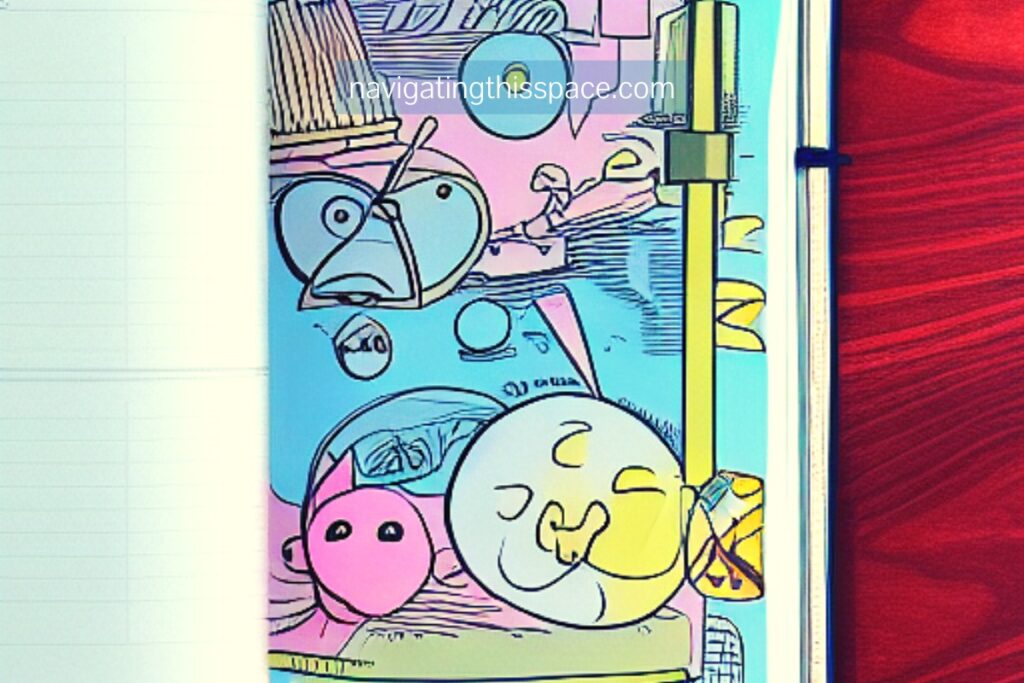
There are endless possibilities when choosing a journaling style — so don’t feel like you have to force yourself into a mold that doesn’t fit!
The best style for you is one that allows you to express yourself freely and consistently.
If you’re struggling to journal frequently, try finding a quiet place where you feel comfortable, set aside some dedicated time, and experiment with different styles of journaling until you find one that suits you best.
And remember, there is no right or wrong way to journal — the only “wrong” way to journal is by not doing it at all.
What style of journaling do you like best: one with prompts, pictures, free writing, or a combination of many styles?
Let me know in the comments below!
Also, before you go to leave that comment, sign up for my free weekly newsletter here. It’s packed with tips and other resources to help you live a more fulfilling life.
Questions You May Have
What is the best journaling method?
There is no single “best” journaling method, as different people will prefer different styles of journaling. However, some popular journaling techniques include free writing, art journaling, and using prompts.
What is the most popular type of journal?
The most popular type of journal will depend on your interests and preferences. You can choose between a bullet journal, a travel journal, and an art journal to express your thoughts. Choosing what everyone else is doing will not guarantee that you will like it.
Is journaling effective?
Journaling can be an effective way to process your thoughts and emotions. It can also help you to reflect on your day-to-day experiences and set goals for the future. Additionally, journaling can boost your mood and creativity and reduce stress levels.
What is the best way to start journaling?
Finding a pen and notebook you like is a great way to start journaling. You can also try using a journal app on your phone or computer. Once you have everything you need, set aside some time and write
How long should I journal a day?
How long will it take to get to a point where you feel confident enough to stop writing, drawing, or painting? That’s how long you should journal for each session. If you feel like you need more time, then journal for longer.
What should I journal every day?
Your journal can track your daily thoughts and experiences, gratitude, goals, mood, energy levels, and sleep patterns. Additionally, you can use it as a brainstorming tool to generate new ideas for a new or old project.
How many different types of journaling are there?
There is no specific number for the different types of journaling because new styles are always being created. Whenever you combine different styles of journaling, you create a new style. So take what you like from popular trends and create your own way of journaling.
Pin It!
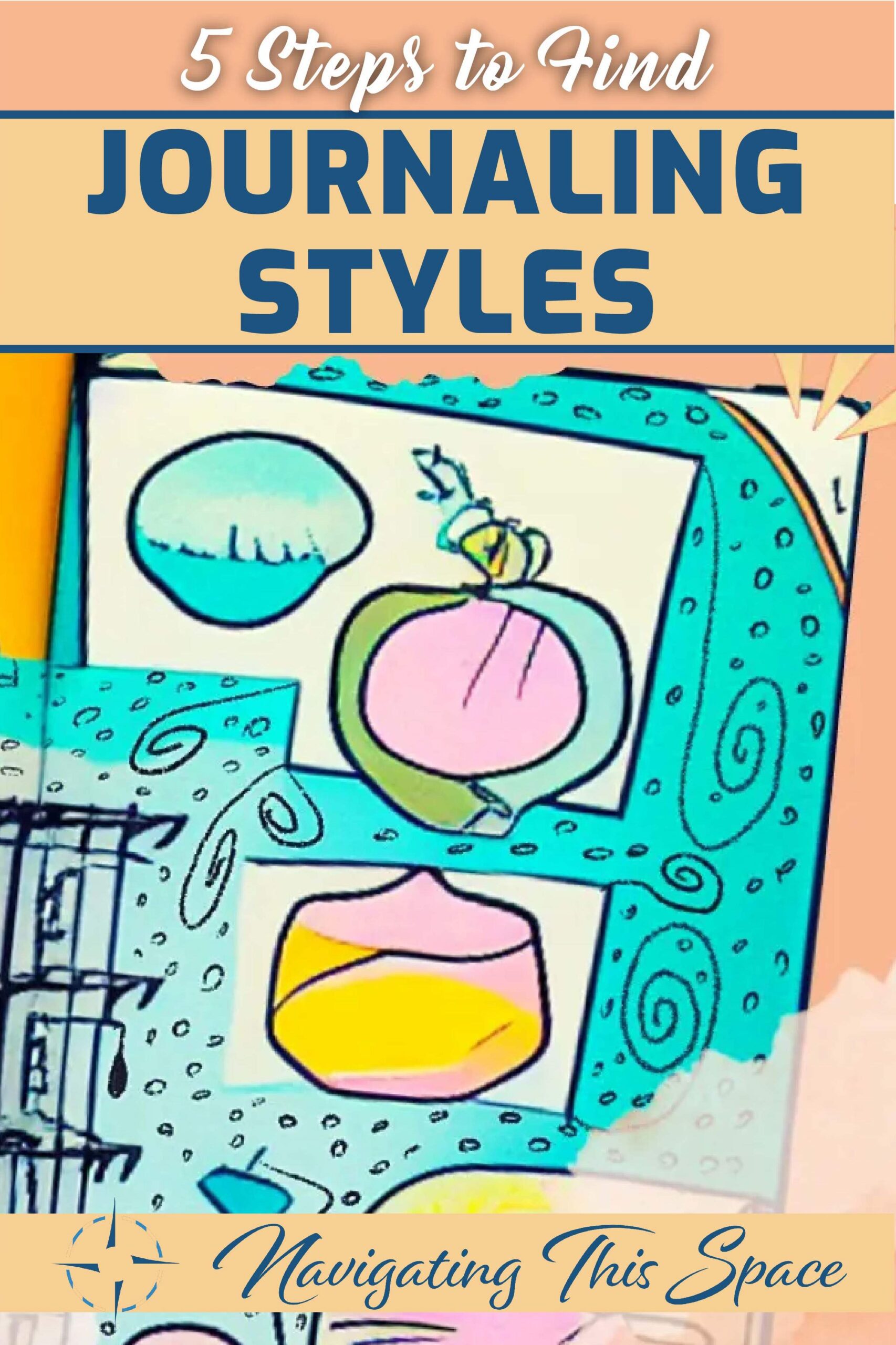
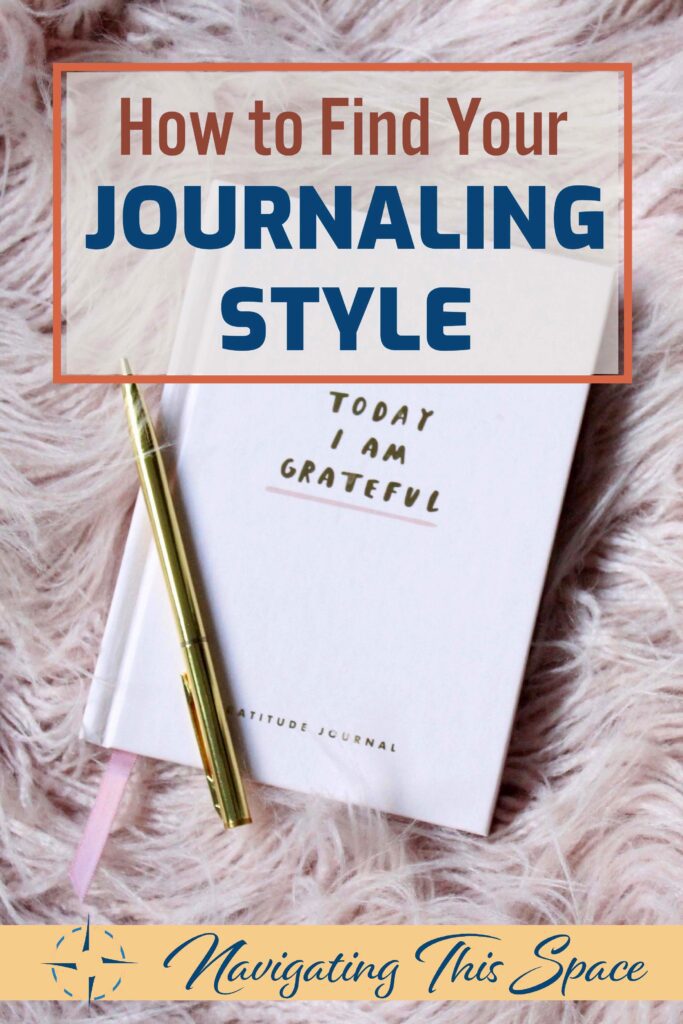

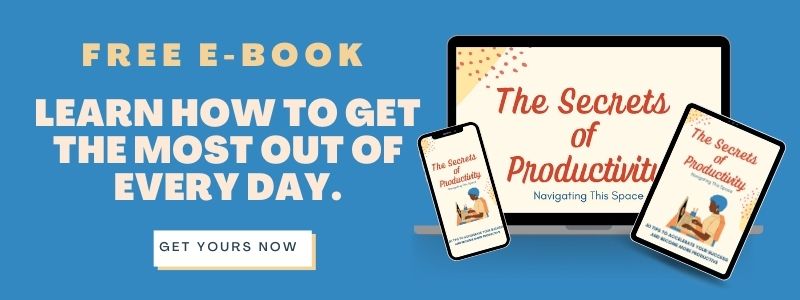


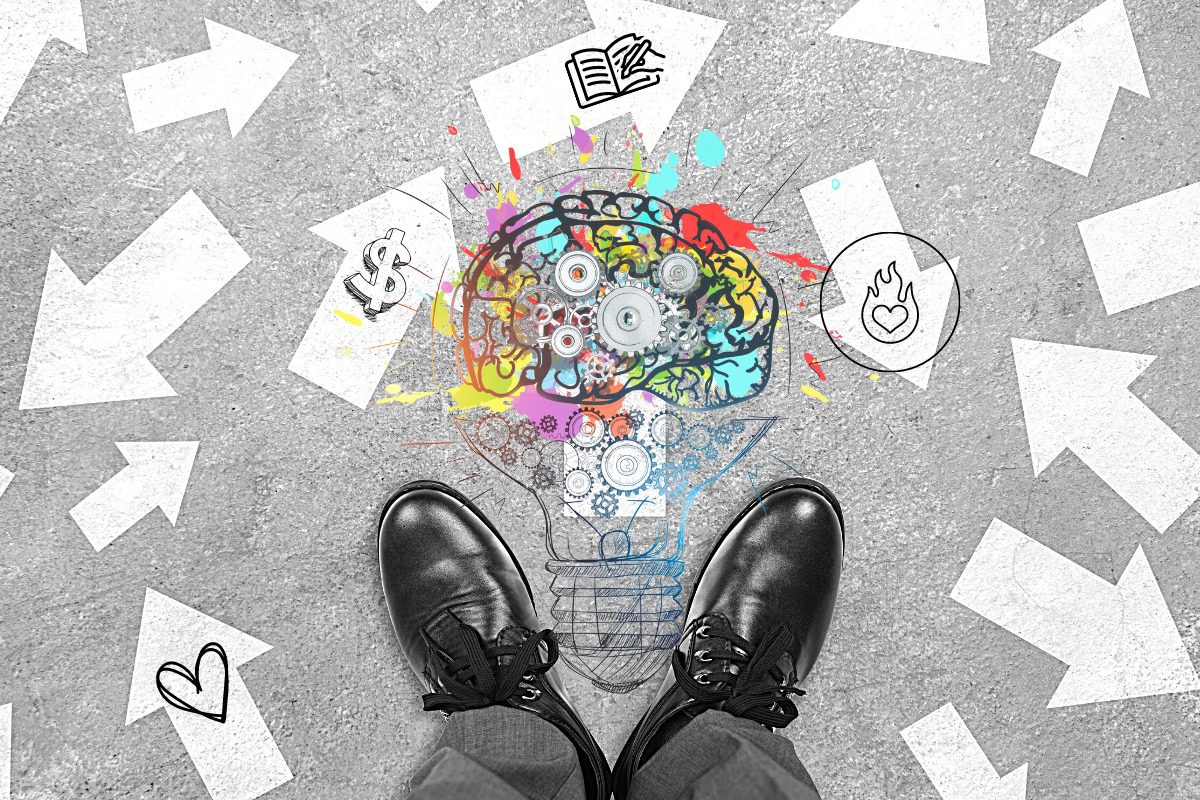
thank for so many suggestions for starting to journal
You’re very welcome Tianna, thanks for reading and commenting!
Loved this!!! I agree there is no right or wrong…..just find what works best for you. For me its mix and match style, on some days bullet points, really depends! Thanks so much for sharing!!
Thanks for sharing your style of journaling Nicolle, I love that you mix and match!
I am definitely the journal by the bedside kind of person. It keeps it front of mind. Thanks for these inspiring ideas!
You’re very welcome Stephanie, I keep mine beside the bed sometimes, it really helps when I’ve had a crazy dream and I want to write it all down before it disappears.
Love this post! Great tips for finding your journaling style. Starting a journal practice is a goal of mine this year and I’m struggling with it. This post gives me clarity, thanks for sharing. I look forward to reading more articles!
I love this post so much! Journaling (and so many forms of therapy and self care) are not one size fits all. I love to write but have never really gotten into journaling regularly – maybe finding my unique journaling style will be the motivation I need! Thank you for sharing this!
Love this post! Finding your ‘why’ is so important.